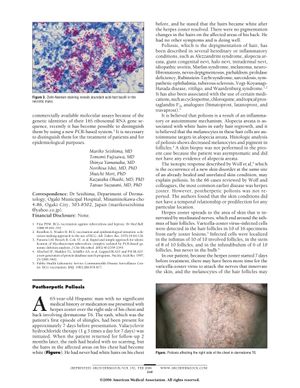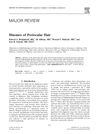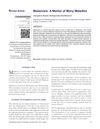Postherpetic Poliosis
February 2006
in “
Archives of dermatology
”

TLDR A man's chest hair turned white after a shingles infection, possibly due to virus-damaged pigment cells.
In the 2006 case report, a 65-year-old Hispanic man developed poliosis, the depigmentation of hair, following an episode of herpes zoster (shingles) on the right side of his chest. This was his first episode of shingles, and he was treated with valacyclovir. Two months later, the rash had healed without scarring, but the chest hair in the affected area turned white, with no similar changes on his back. Poliosis has been associated with various hereditary or inflammatory conditions and certain medications. The authors suggest that the varicella-zoster virus, which causes shingles, may have damaged or destroyed the melanocytes in the hair follicles during the infection. This is considered an unusual case as poliosis following herpes zoster had not been reported in the literature before. The patient did not require further treatment as he was not concerned about the cosmetic appearance of his condition.




